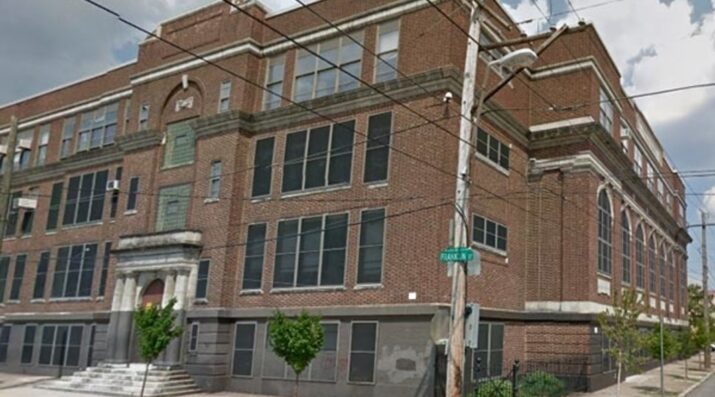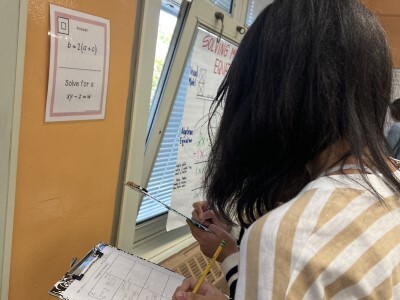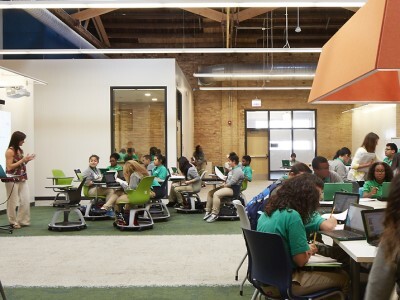Competency-Based Education Approaches in K-12 Schools, Part One
Topics

We’ve all had the experience of truly purposeful, authentic learning and know how valuable it is. Educators are taking the best of what we know about learning, student support, effective instruction, and interpersonal skill-building to completely reimagine schools so that students experience that kind of purposeful learning all day, every day.
Practitioner's Guide to Next Gen Learning
A round up of tools and resources focused on competency-based education to help practitioners personalize learning for students, featuring Philadelphia School District's Building 21.
Competency-based education (CBE) isn’t just gaining ground in higher ed: a number of K-12 educators from across the country are now embracing the approach—with promising results.
In this first post of a two-part series, you’ll learn how educators from Philadelphia’s Building 21 share some of their best CBE resources. Below is a round up of tools and resources focused on competency-based education to help practitioners personalize learning for students.
But First, Get A Student’s Take on CBE
Listen to Nico, a student from E.L. Haynes Public Charter School in Washington, D.C., talk about how competency-based education has helped engage him as a learner:
A learner's perspective on competency-based education
This type of agency, engagement, and deeper learning is exactly why I spent so many hours as a classroom teacher pouring over assessment data and planning learning with and for my students—despite the fact that I didn’t have tech tools to support me, and my assessment “hub” was a binder with a section for each student!

Model: Building 21 - In partnership with the School District of Philadelphia, Building 21 (B21) is a non-selective public district school serving students in grades 9-12.
Their mission is to empower all learners to connect with their passions and build agency to impact their world, and this mission is realized by placing students at the center of the system.
“Our goal has remained constant since that first day. We wanted to develop a new secondary school design that adapts to meet learners where they are, and then helps them to pursue their interests and passions on a pathway to college and career success.” –Laura Shubilla
(Read the full article: Building 21 gives students endless opportunities)
At Building 21, students are supported to design their own pathway to graduation—a pathway defined by B21’s competency-based framework. Within the framework—which is derived from the Common Core standards and other nationally validated standard sets—each student follows a student-driven customized learning pathway to graduation that includes:
- Studios: In Choice Studios, students design proposals for a class based on interest and passion (such as fashion or web design) and teachers work to ensure that B21 competencies are embedded and content from multiple disciplines is integrated. Traditional courses are also reorganized as studios that incorporate field study, called& Core Studios. In core studios, students are grouped heterogeneously. Both studios are project-based.
- Student-created learning pathways: Student-created pathways can be done individually in Personalized Studios. During personalized studios, students work towards the mastery of selected competencies through individualized assignments organized around their interests. Personalized studios also include experiential learning opportunities such as internships.
- Workshops: Blended learning modules and targeted skill development occur during workshops, which are aligned to the Common Core standards and students are grouped by skill level.
- Advisories: Believing that relationships need to be at the foundation of their model, students and teachers are organized into advisories, each with the purpose to create safe, open spaces for students to feel ownership of their school experience and to receive personalized support.
- Internships: Offered across the 9-12 continuum, students extend their learning and ignite their passions by connecting with professionals in their community.
Additional Resources
- B21’s Competency Toolkit - This toolkit features B21’s competency framework and provides a dashboard for students and advisors. This serves as a support for learning pathway design and a way to track progress on competencies as a student moves toward graduation.
- B21’s Student Indie Studio - One example of a Core Studio that students independently move through as they demonstrate mastery. The Indie Studio is designed to help students take learning into their own hands and offers information on competency-based learning along with key challenges students must complete to demonstrate mastery.
- Teacher Competencies - Educators asked themselves: “what skills do teachers need to develop or continue to build in order to successfully implement the Building 21 model?” This question drove the development of teacher competencies, which allow them to define shared expectations.
- Teacher Design and Planning Tools - Teachers in Philadelphia are currently piloting the following tools. Next year, all teachers in the B21 network will be using these to design and plan their studios and workshops.
- Personal Learning Pathway - As educators at B21 continue to iterate their concept of a Personal Learning Pathway, they’re finding a need for many tools that do not yet exist. They have created a series of dashboards for students and teachers to use to inform their experiences.
- To track progress and growth of competencies and support the need for flexible, cross-disciplinary grading of performance tasks, a suite of custom dashboards was developed in the open source platform Slate.
- A robust system of Google spreadsheets and sites is used to create real-time data dashboards for administrators, teachers, and students displaying different types of data from several different systems.
Read Part Two for more about competency-based approaches in K-12 schools.




